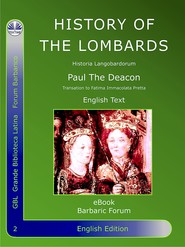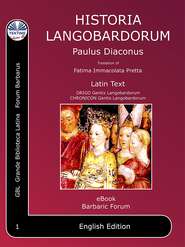По всем вопросам обращайтесь на: info@litportal.ru
(©) 2003-2024.
✖
Re-Organize Your Diet
Год написания книги
2019
Настройки чтения
Размер шрифта
Высота строк
Поля
All very true and from here we already understand how fundamental carbohydrates are in giving us the energy we need to face the day ahead.
To simplify even further, let us pretend for a moment that our body is really like a car; carbohydrates are, like we said, our fuel, while proteins (the bricks which hold our body) are the luxurious interiors and the smart bodywork, while fats are the seat belts and the tyres and they are there to protect us.
All these elements are fundamental for the car to function and work properly.
No one is part more important than the other, but each must be seen in the right context.
One can have a new and beautiful car, with all the unimaginable security systems, but without fuel the car will not move. If we put in only a little fuel we would need to stop often for fuel. With too much fuel we would feel too heavy and if we introduce the wrong fuel we would need to go to the mechanic.
For this reason carbohydrates are the basis of a healthy diet, which should be 50-60% of what we usually eat. With these proportions the chances of the car breaking down are reduced.
Therefore if we don't take care of our car soon it will start getting ruined, with scratches and bumps, it will get rusty a little at the time and it would be too late to restore it to its original splendour.
To stop that from happening we need very little, a small bit of maintenance each day to keep it beautiful and sparkling and even if years go by the charm remains the same.
This short metaphor is to say that proteins are fundamental but are needed in much smaller quantities than we are made to believe. Each day they should make up 15% of what we eat.
Fats, on the other hand, are our safety systems; driving without safety belts or with worn tyres are a great risk to our health.
Good fats help to protect our body, while bad fats act against the good ones and put us at risk by making us more vulnerable.
They should constitute 30% of our food intake.
After this short lesson in mechanics let us now move on to getting to know these three fundamental nutrients, of which there are positive and negative aspects.
Challenge °1
At the end of each chapter we will find this section which presents the challenge to eat well and to carry it through to the end.
They can be taken as a weekly challenge and we can try to follow them throughout the week or as a daily challenge where we try to incorporate one of those meals that we are advised to take.
This first week we read this manual to get some idea of how it works, then from next week onwards we try to carry the weekly challenge on to the end of each chapter.
Chapter 2
Carbohydrates (what are they and what do they do?)
Complex carbohydrates
Gluten
Fruit and honey
Simple carbohydrates
Challenge n°2
âWe don't know either where our food comes from or where it ends up, we are provisional carriers, distracted consumers and most of the time not aware of it, the ultimate goal is our immediate satisfactionâ
Paola Maugeri
(My life at zero impact)
Carbohydrates
As already seen, whether it is a Mediterranean, oriental or vegetarian diet, a healthy diet is based on carbohydrates which are our the most important source of energy and should constitute 50-60% of what we eat.
During digestion all carbohydrates are broken down and transformed into glucose, which is simple sugar.
This, through hormones like insulin, is carried to the blood and it gives us the energy we need.
The level of sugar in the blood (so called glycaemia) must remain constant to avoid ailments and health issues in the future, for example diabetes.
Carbohydrates can be divided into two types: complex (starch) and simple carbohydrates (sugars).
Complex carbohydrates release sugars into the blood in a slow and gradual way, giving us constant energy, meanwhile simple carbohydrates have a fast release and cause our energy levels to fluctuate rapidly, making them go up and down very quickly, creating a dangerous escalation for our health.
Complex Carbohydrates
Our diet must be based on complex carbohydrates.
We are talking about whole wheat cereals, even better if in the form of grains, as a whole, so to maintain their nutritional properties, otherwise lost in the process of refining.
Grain, or wheat, that we normally consume as pasta, bread and pizza, is the main cereal in our diet and it is an optimum food to be consumed wholemeal because the refining process that produces white flour impoverishes the nutritional value of the wheat.
Moreover grain is full of minerals and anti anaemic agents.
On the other hand, being the most popular, it is also the most manipulated type of grain, so it is advisable to insert in the diet varied types of organic and wholemeal wheat.
There are many types of cereals and it is important to vary them each day, because there are many different nutritional values that complement each other giving our body all the necessary nutrients.
In addition, if we eat the same food every day a form of addiction is created which causes less nutritional advantages because our body becomes too accustomed to it, with the risk of becoming intolerant in the future (such as with gluten-rich foods).
Every cereal contains optimum nutritional values, is rich in minerals and vitamins and has good quantities of protein.
Rice, also well known, is better as wholemeal, is good for losing weight and is easily digestible, likewise quinoa, a cereal with a high protein content and rich in calcium and millet which is cleansing and rich in minerals.
Spelt is suitable for sporty types as it contains few calories but helps to increase muscle mass and it invigorates muscles, as oats do, which are a great strengthener. Also we have barley which is refreshing and beneficial to the nervous system, and then there is rye which stimulates the metabolism and is energising.
Amaranth, good for the heart and liver, buckwheat (that, in spite of the name, is not actually a grain but for its characteristics is associated as one) is warming and mineralising.
Last but not least we have kamut, which is an ancestor of wheat, and maize, another well-known cereal, with relaxing properties that is used mainly to make polenta flour or sweets, and to make gluten-free pasta, as rice, millet, amaranth, quinoa and buckwheat can also do.
Recent developments have also shown that also oats are to be considered gluten-free although up to not long it was considered to be a cereal containing some gluten likely due to the fact that when it was cultivated it became contaminated with wheat, rye and spelt
Dehusked or pearled grain?
Pearled grain goes through a kind of process of refinery that takes away the outermost coat, while the ones that are de-husked are simply picked as they come, and so they are to be preferred to pearled grain.







